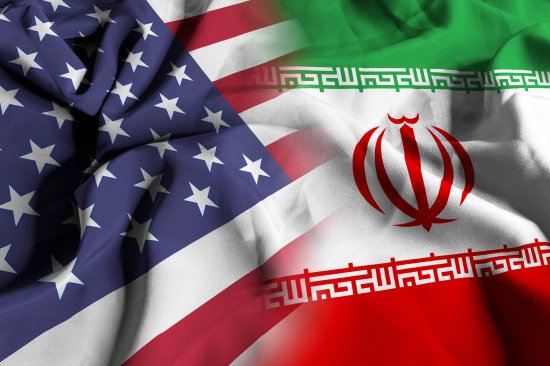
While relations between Washington and Tehran have, if anything, gotten more tense in recent weeks, it’s too soon to declare diplomacy dead.
About a month ago, the U.S. and Iran were reportedly close to an informal understanding that would reduce their tensions over the latter’s nuclear program. A month later, progress on an “understanding” seems limited. A prisoner exchange deal is stuck; there have been no new talks. Relations between Washington and Tehran have, if anything, gotten more tense in recent weeks.
But it’s too soon to declare diplomacy dead. There remains space for both sides to avoid serious escalation while leaving the door open to further, albeit incremental, diplomacy somewhere down the line.
[time-brightcove not-tgx=”true”]Unspoken arrangement
Since efforts to renegotiate the original 2015 nuclear deal collapsed last August, Iran has escalated its enrichment of uranium, to the point that it could likely race to a bomb in a matter of weeks. A return to the original deal is impossible after the U.S. unilaterally withdrew from the accord and enacted painful sanctions under former President Donald Trump. But American officials have suggested a more limited arrangement in a series of talks held earlier this year. If Iran agreed to ramp down its enrichment of uranium, hand over several U.S. citizens it holds prisoner, pull back its support for Russia, and generally avoid taking action against U.S. forces positioned throughout the Middle East, the U.S. would release several billion dollars in Iran’s money currently frozen in bank accounts in Iraq and South Korea.
More From TIME
With the offer came a threat: if Iran, which currently enriches uranium to 60% purity, took the final step to enrich to 90% needed to produce a nuclear weapon, the U.S. would respond immediately—and probably with military force.
This isn’t a new nuclear deal. The U.S. is framing this as an “understanding,” while Iran has said very little about it. If they really did come to an agreement, don’t expect either side to trumpet it. For President Joe Biden, talking to Iran carries significant political risks, given its deadly support for Russia’s war in Ukraine and the recent crackdown on domestic protests. Iran’s leadership, including Supreme Leader Ali Khamenei, distrust the U.S. and have baked anti-Americanism into their governing ideology—a turn back toward negotiating would cost them credibility within the “nezam,” or system, which Khamenei (who is 84 and in fragile health) is conscious of retaining as he looks ahead to the succession crisis that would come after his death. For now, a limited understanding to avoid major escalation is about as much as either side is willing to consider.
Where’s the understanding?
Even this limited arrangement looks like a heavy lift.
On July 5, Iran attacked several oil tankers exiting the Persian Gulf, including one owned by Chevron. The U.S. dispatched advanced F-35 aircraft and more troops to the Gulf to deter further Iranian attacks. Iran continues to supply Russia with drones and is assisting with the construction of a drone factory inside Russia. The surprising exit of Biden’s special envoy to Iran, Robert Malley, an advocate for diplomatic engagement, over alleged mishandling of classified documents and a lack of progress on a prisoner exchange suggests that this year’s diplomatic push has failed to yield any positive results.
Yet on the most important issue at stake—Iran’s ever-expanding nuclear program—there remains grounds for limited, cautious optimism. The U.S. has urged Iran to cease its stockpiling of uranium enriched to 60%, and Iran has reportedly agreed in principle. Whether it will do so in reality depends on its willingness to cooperate with U.N. nuclear inspectors. Earlier this year, Iran agreed to an expansion of U.N. surveillance and has even provided some information to settle long-running U.N. investigations into its past nuclear activities. This move came shortly after the inspectors discovered evidence of Iran enriching trace amounts of uranium to 83.7%, tantalizingly close to the 90% needed to produce a bomb; Iran has explained to the U.N. that this escalation was accidental.
Looking ahead for good news…or bad
The outlook for Iran is a mix of good and bad. While tensions with the U.S. appear to be worsening, the limited cooperation between Tehran and the U.N. inspectors suggests some slight progress on the nuclear issue. The U.S. has warned Iran from enriching to 90%, and so far, Iran seems to be listening. It may continue to add to its stockpile without taking the final step to weaponization. Whether Iran decides to actually ramp down its enrichment, as the U.S. has pushed it to do, will become clear soon, as U.N. inspectors are expected to report on Iran’s enrichment activities by the end of August. For now, it’s a question of “wait and see.”
The result is a shaky status quo with both the U.S. and Iran avoiding escalation. Even as both sides rattle the saber, neither appears willing to take things to the next level. This shaky state of affairs could very easily disintegrate into a more serious confrontation, should a new crisis arise or should Israel try to attack Iran’s nuclear program without U.S. cooperation.
For now, though, the situation between the U.S. and Iran is stuck in a kind of limbo. The understanding hinted at a month ago remains largely theoretical. But there’s an opening for de-escalation, should Iran be willing to take the necessary steps on enrichment. Iran and the U.S. may not be close to talking, but they’re still not ready to start shooting. That, at least, offers some hope that things may improve in the near-term.
TIME Ideas hosts the world's leading voices, providing commentary on events in news, society, and culture. We welcome outside contributions. Opinions expressed do not necessarily reflect the views of TIME editors.